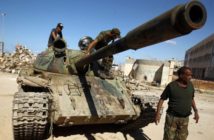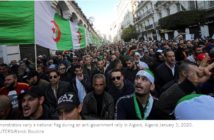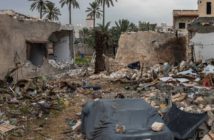By Arab News
By Osama Al Sharif
Libya is quickly turning into a failed state, amid Arab and international indifference, two years after the fall of the regime of Col. Muammar Qaddafi following foreign military intervention and a popular uprising.

TRIPOLI, LIBYA
The central government is weak and ineffective and armed militias continue to wreck havoc as they defy attempts to incorporate them into a regular national army. There is a state of chaos and lawlessness and the political process has come to a halt. Libyans are angry as state and local institutions fail to perform. In the east calls for separation are rising while there is evidence that Al-Qaeda-affiliated groups are active in the south and west. Libya’s oil production has been cut to half and the economy is suffering.
Last Friday’s massacre in Tripoli, where a Misrata militia opened fire on unarmed civilians protesting against the spread of violence and lawlessness in the capital, left at least 40 dead and scores injured.
It underlined the utter failure of the government of Prime Minister Ali Zidane in addressing the biggest threat to the country in the aftermath of the fall of the Qaddafi regime: The spread of armed brigades and militias and their refusal to disband. Zidane was abducted last month by gunmen who later released him. He accused two lawmakers in the National General Congress as well as an official of the country’s Counter Crime Agency of being behind his abduction. And earlier this week it was reported that Libyan intelligence chief General Yusuf Al-Atrash was killed and his deputy Mustafa Nah was abducted. The news coincided with Zidane’s call on all armed militias to leave Tripoli. The Misrata brigade had withdrawn from the capital for now, but there are no guarantees that they would not return. Now the US wants to train thousands of conventional troops but that could lead to future confrontations with heavily armed militiamen with various affiliations and loyalties.
In Benghazi local militias have distanced the oil-rich region from the central government and oil production has dropped from 1.5 million barrels daily to less than 600,000 barrels. Protesters have closed export terminals and an oil black market has emerged as so-called security guards are reported to be selling oil independently. Libya’s oil minister claimed that such disruptions have cost the country more than $1 billion in the past five months alone. The separatist self-declared autonomous Cyrenaica government is trying to sell oil independently after loyal militias took control of important export terminals.
The political process is dead. The National General Congress is dysfunctional and the government has been unable to engage political parties and groups, including the Islamists, in an open dialogue.
Furthermore, the Arab League has failed to address Libya’s turmoil, while the Europeans, who spearheaded the NATO intervention in 2011, can only express concern over the country’s instability. The fact is that Libya has been forgotten by the international community. The toppling of Qaddafi was followed by chaos and the US attempts to intervene were circumvented by the killing of the US ambassador in Benghazi last year. It is ironic that the threat to central authority and collapse of the state that is taking place in Libya today is also happening rapidly in Iraq, which also witnessed foreign military intervention. With over 300 militias combining a force of no less than 250,000, it is difficult to see how a weak and discredited government can find a way to disband these militias and brigades and extend its authority over various areas. The scenario for civil war in Libya is unfolding and that would hasten separatist moves to partition the country while allowing militants to form permanent bases in the south and west.
The dramatic fall of Qaddafi presented a different scenario for the future of the Libyan people. Libya is a vast country of six million inhabitants with access to huge oil and gas deposits making it one of the richest countries in the region. It was supposed to be a hopeful story amid the turmoil that followed the outbreak of the Arab Spring. But the reality is different. For decades Qaddafi had stymied the country’s political, social and cultural development. His departure had uncovered a myriad of problems and challenges. Today the biggest challenge for Libyans is to preserve their country’s territorial and demographic integrity. The alternative is a quick and unstoppable collapse.
— Osama Al Sharif is a journalist and political commentator based in Amman. Email:alsharif.osama@gmail.com






